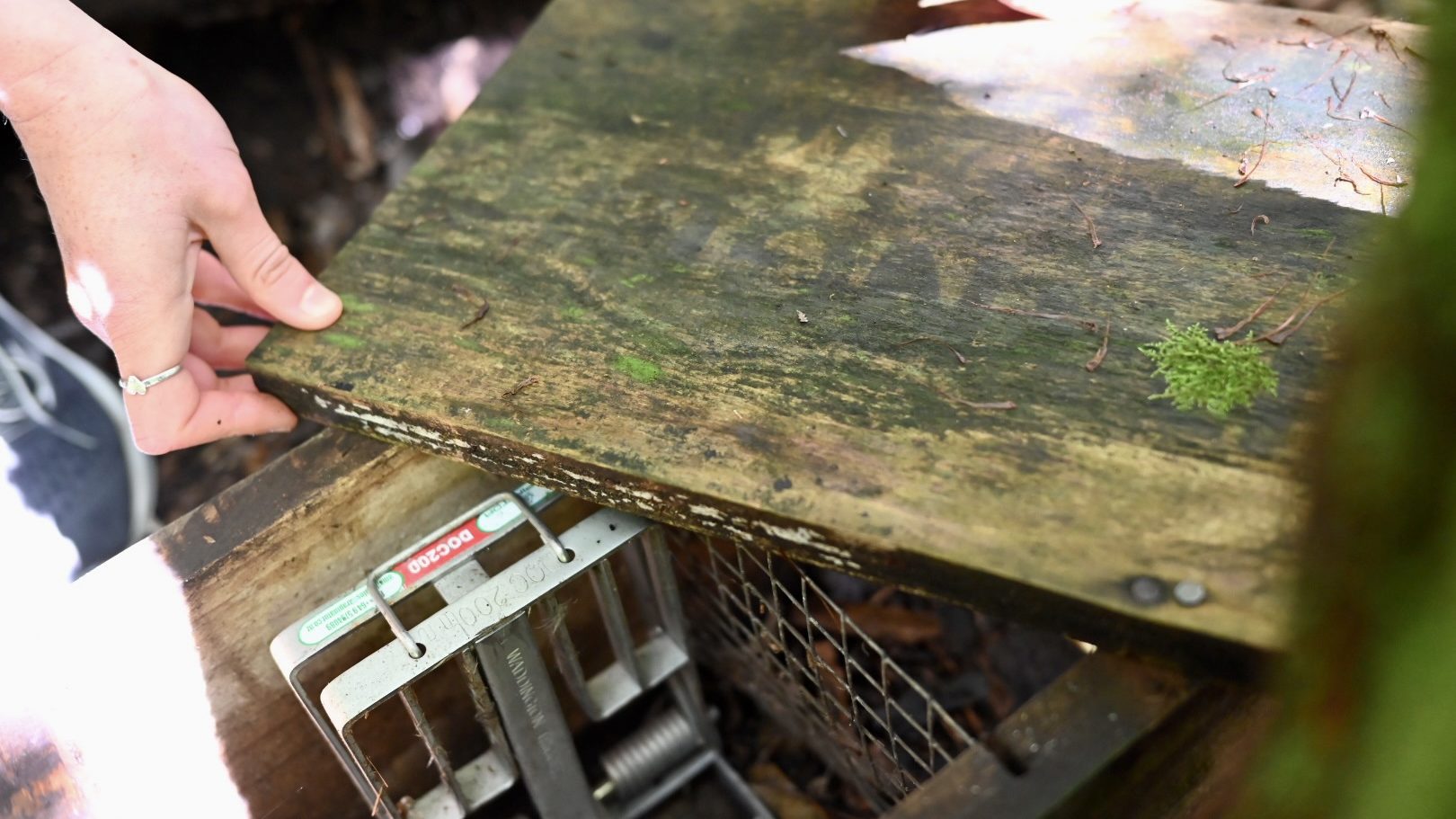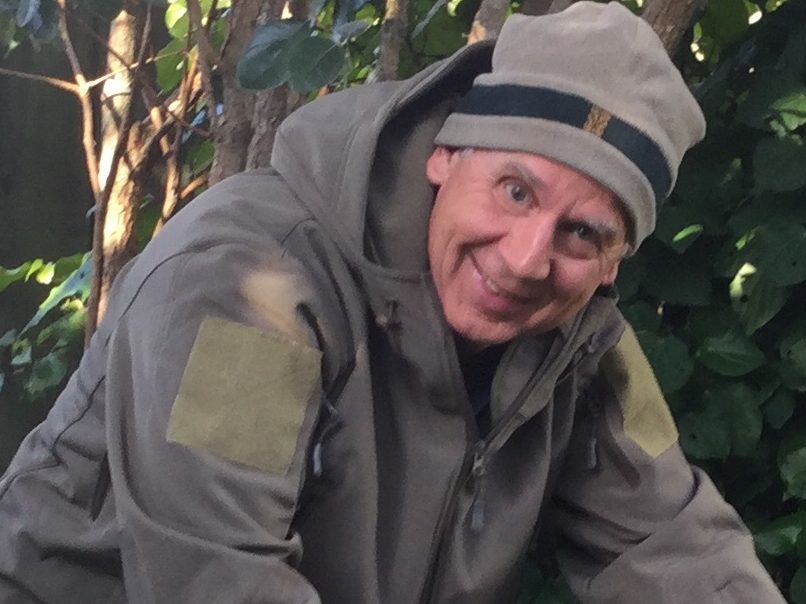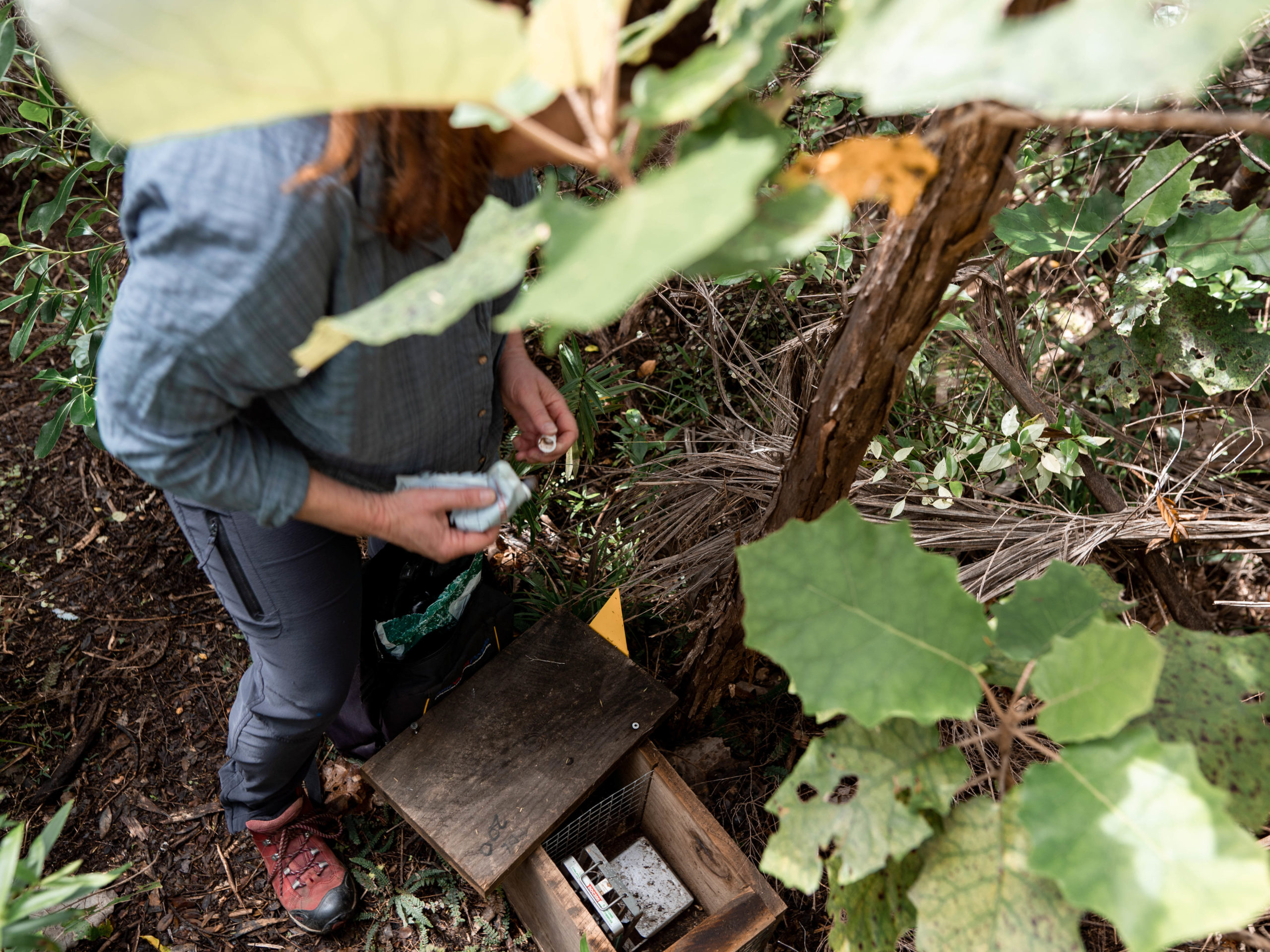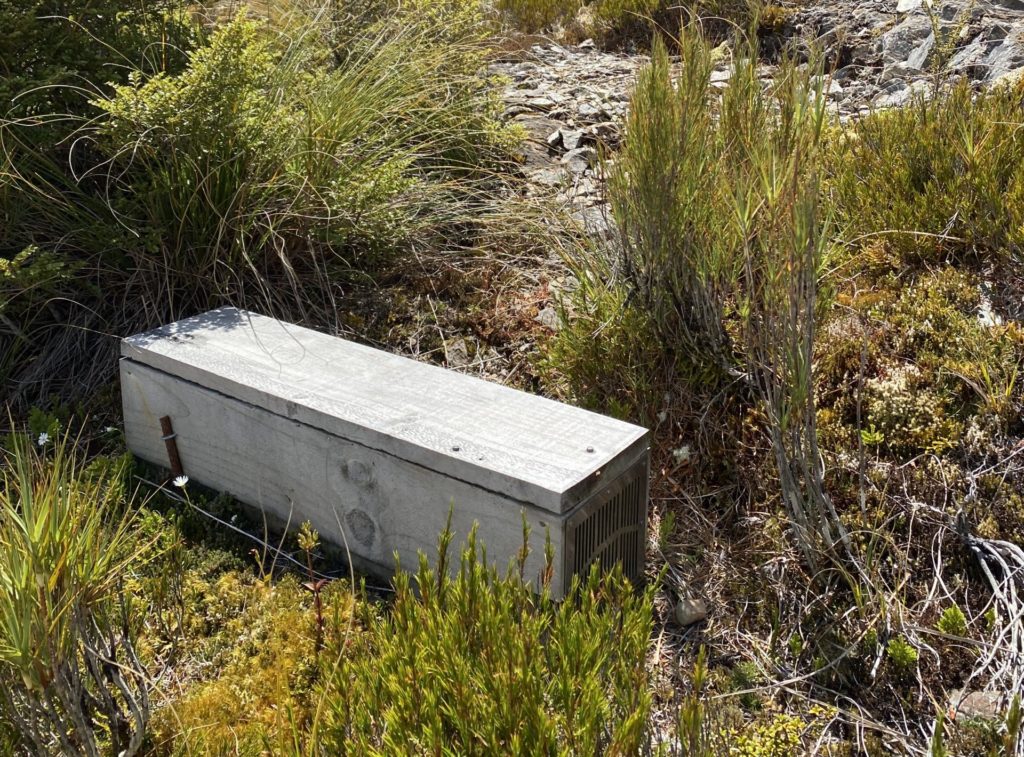How did an oil painter, bird-lover, and rock drummer come to invent one of the most well-known and widely used humane kill traps in Aotearoa New Zealand?

This piece pulls material from an original story based on a 2018 interview with Phil Waddington.
It’s a story that goes back a lifetime…

Art and conservation are deeply entwined in DOC series trap inventor Phill Waddington’s story. He has always loved birds, always been a conservationist and often paints the birds and plants that he loves. His paintings are stunning.
“I grew up in a family with animals,” Phill says. “I had pet birds from a young age – about four years old – and used to breed them. Then later when I became a full-time painter in the early ‘70s, I spent many years in the Urewera, living with and painting the old kuia of the Tūhoe with their moko. I became entrenched in māoritanga (culture) and kaitiakitanga (guardianship/conservation).”
The Tūhoe kuia called Phill their mokopuna (grandchild/great nephew). They taught him about rongoā (Māori natural medicines) and have been a huge influence on how he has continued to live his life since.
“Throughout my 20s I was also making my own possum traps and learning about the ecology of the bush,” Phill says. “I could see what happens when you control possums. I also spent a lot of time in the field with people from Wellington’s DSIR Ecology Division (the former ‘Department of Scientific and Industrial Research’).”
He learnt to understand the bush deeply from an artistic, kaitiakitanga and scientific perspective.
“I always wanted to own a piece of land, to look after it through kaitiakitanga, to work on my own balance of bush,” he says. “I got my opportunity over 20 years ago. It was a piece of pre-European bush in Stokes Valley – 57 acres, owned by a developer and going to be developed.”
Phill knew the remnant bush was very unique, a reminder of how the Hutt Valley used to be.
“I sold all my paintings, gathered together every cent I had and borrowed more to buy it,” Phill says. “I saved it from development. There was a wetland area with kahikatea and I knew it had rare plants and native species.”
Phill placed a QEII covenant on the land and named it ‘Te Oranga Whenua’.
“It means ‘The Healing Land’,” Phill explains, “The name had two meanings because the land was healing and it also had rongoā, the Māori healing plants.”
Phill painted many bush scenes in the forest block and began to protect it by carrying out trapping.
“When it was put under QEII covenant, they did the weed control and I did the predator and browser control. That’s where the (DOC series) traps came in. Because of my background from both the Māori and scientific side, I was very against using poisons and upsetting the ecology. I wanted to use just traps. I tried all the traps on the market. The Fenn trap was the only trap available for stoats and they were nasty and didn’t work well. They were inhumane. All poisons are inhumane too. So I started looking at making my own traps.”
Kiwi ingenuity
Phill had a pretty good trap that was working well, when he heard through the media that the Department of Conservation was losing the battle to save kiwi from stoats.
“I contacted DOC and they came straight away. That’s how the DOC series of traps came about. I was taken all over New Zealand by DOC. We went through a long process of trials throughout New Zealand, convincing people that DOC traps were as good as or better than Fenn traps.”

After trials and modifications, the DOC series became, in fact, twice as efficient at catching stoats compared to the old Fenn traps and, importantly, they are humane.
“The DOC series passed the NAWAC test for humane kills with 10/10. The humane tests on Fenn traps and stoats resulted in 9/10 fails! Only 1/10 stoats were killed humanely,” Phill says. “At the time, the Fenn was the only trap on the market and imported from the UK. The Department of Conservation’s supply of Fenn traps was irregular and had problems and the traps themselves were reliant on good trappers being able to set them and have a result.”
Phill has had his own painful experiences of catching his thumb in the difficult Fenns.
“Community groups were coming on the scene and DOC wanted a trap that anyone could use safely and effectively” he explains. “The DOC 200 passed the NAWAC tests for stoats, rats and hedgehogs and only failed on one very large ferret. So we developed the DOC 250 – a bigger version for ferrets. It’s the only humane ferret trap on the market in the world.”
It is now illegal to use Fenn traps to trap stoats in the UK.
“I gave the intellectual property rights for the traps to New Zealand,” says Phill, “on the proviso that they are still manufactured in New Zealand, so that they create employment and also we can keep an eye on the quality of the traps.”
Phill also had one other, more quirky proviso for the traps.
“The DOC series has a safety catch – a clip on the top so you don’t catch your fingers. When I invented the staple, I insisted on it being made from No 8 wire to keep the ‘kiwi touch’ and reflect the No 8 wire technology of the first DOC traps I made, even though the traps themselves have now developed into something very professional looking.”
We asked Phill to show us some tips and tricks for the DOC 200 like calibrating your trap, looking after the box lid and how to use the safety catch.
Although Phill gifted his claim to intellectual property rights for the DOC series, he has been disappointed to learn that the traps have been sent to China by others and copied for the New Zealand market.
“The Chinese rip-offs are being sold in New Zealand as DOC traps,” Phill says. “They’re sold as humane and they’re not. They even have my name and DOC stamped on them. The worst part is that people come back to me and say they don’t work properly.”
During the trap testing process, Phill spent a lot of time with Department of Conservation trapping expert, Darren Peters.
“Darren said once that the reason the trap is so successful is because it was invented for conservation, not for making money.”
The DOC series of traps have gone on to win a BearingPoint Innovation Award – a prize of $1000 awarded to the Department of Conservation – while Phill himself was named a ‘Wellingtonian of the Year’ in 2013, receiving the Environmental Award in recognition of his gift of the DOC series traps to New Zealand.
“I didn’t know I’d been nominated until I saw in the paper that I was a finalist,” says Phill. “It was lucky I turned up. I was shocked when I won!”
After the award Phill was approached by Te Nukuao Wellington Zoo to be their inaugural ‘Artist in Residence’, painting the animals – another example of how conservation and art follow and interweave with each other in his life story. Phill also donates some of his paintings to fundraising auctions for trapping programmes.
But the trap inventing was far from over yet.
“DOC asked me to make a humane possum trap, so I made the ‘Trapinator’. Once I’d invented that as well I’d made the set,” he says. “It passed the NAWAC humane tests. It’s made up Auckland way and used widely in that area.”
Respect for animals caught in the wrong place, wrong time
Although Phill is New Zealand’s own inventor of kill traps, he has a lot of respect for the animals he is targeting. It’s one of the reasons that building humane traps is important to him.
“I don’t like to call them ‘pests’,” he says. “I call them predators and browsers. They’re in the wrong place at the wrong time. I spent a lot of time studying stoats with the traps and I do have respect for them. Inventing the traps all comes back to my dislike of using poisons and wanting to heal the land.”
Painting for conservation

“I use art to push the barrel about endangered species. Some of my bird paintings – the rare and endangered birds – have a little trap logo on the end of my signature. The birds that I paint and love are protected by the traps I invented.”
His traps have even helped to save the kiwi in the remote valley where he first knew and painted the old Tūhoe kuia.
“One kuia, Te Onewhero had a picture on her mantelpiece of herself and her husband in kiwi cloaks. The cloaks were later presented to Royalty. She said to me, ‘when you have grandchildren they (kiwi) will be gone’. I was in my early 20s then. In an amazing coincidence, I went back with the Department of Conservation and DOC 200 traps to save those very kiwi in her valley 40 years later!”
A conservation legacy
Unfortunately, Phill had to sell his own bush block in Stokes Valley a few years back, but the bush is still in good hands.
“Hutt City Council bought it and made it a reserve. They renamed it Horoeka Reserve and now it’s exactly how I envisaged. It’s open to the public and used by schools and a team of local conservationists all look after it.”
Phill went back for a visit recently and made a surprising discovery.
“When I owned the property, a neighbour’s little boy couldn’t read well, so I made a Gnome House in the forest where he could exchange letters. He had to write and ask permission from the gnomes before he could do things in the forest. The boy wrote letters and learnt to read and now he’s grown up, in his 20s and works for a computer company. The original Gnome House was in a big old black beech tree next to the old historic Bridle Track. Well, when I went back recently there are Gnome Houses everywhere now!”
Perhaps gnomes are the new kaitiaki of Horoeka Reserve…
You can buy your own DOC 200 trap online through the Predator Free NZ Trust shop.

